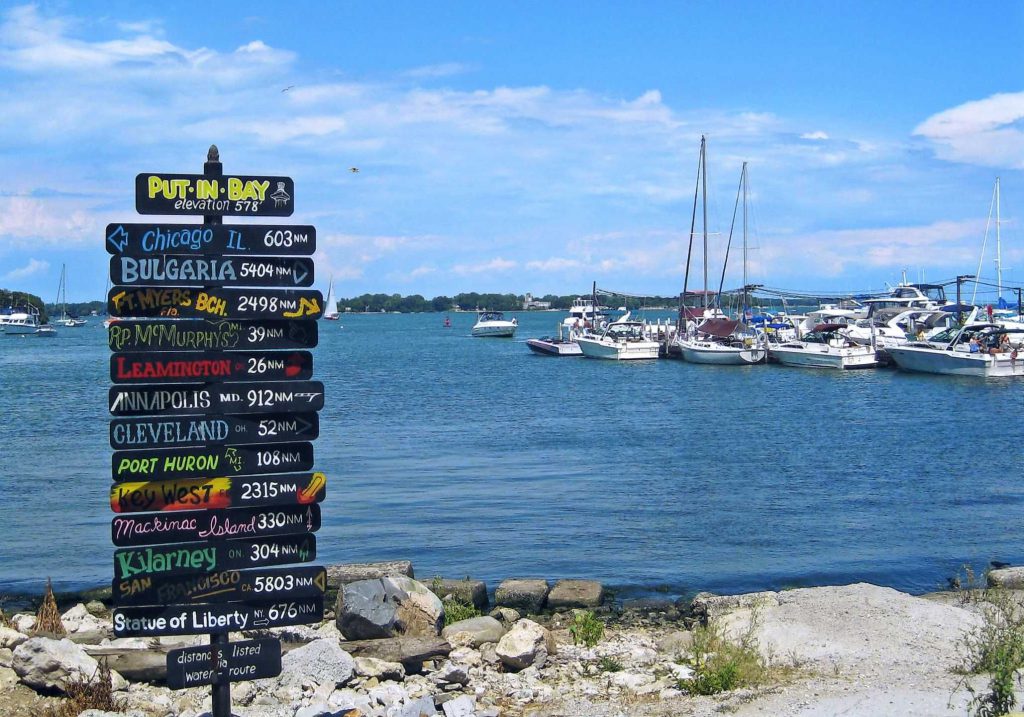Put-in-Bay Before 1812

South Bass Island, or Put-in-Bay, is one of Lake Erie’s choice travel destinations. In fact, people come from all parts of the world to capture some of the island’s magic. When they visit, sightseers are thrilled to find lodging at famous island establishments including Put-in-Bay cabins and Put-in-Bay hotels. Such residences augment their overall experiences of peace and relaxation that accompany any visit to the Lake Erie Islands.
It’s no secret that one of South Bass Island’s best features is its rich history. Many tourists and residents are aware of its captivating legacy of hotels. Even more supporters are proud to discuss the island’s role during the War of 1812, and the breathtaking Victory Monument that was constructed to honor post-war peace and prosperity.

For those who are unfamiliar, the War of 1812 marked a turning point in American – and Put-in-Bay – history. When the war ended, developers truly began to settle the island. But, before that, very little cultivation occurred. Let’s examine the years on Put-in-Bay prior to 1812.

Indians on South Bass Island
According to historians, the Erie Indians were the first Native Americans to dwell in Ohio. Naturally, they were the first ones to visit South Bass Island and the other Lake Erie Islands. These early Indians would travel north along the Ohio River to Lake Erie via the Warrior’s Path (also known as the Sandusky-Scioto Trail). Once they reached Port Clinton, they would canoe westward toward the Detroit River, island-hopping along the route, or they would paddle east along the shoreline toward Niagara Falls. In the early spring or late fall, when severe storms would endanger their travel, the Indians would use Put-in-Bay as a temporary haven from the squall. The wintertime brought many Indians to the island to hunt raccoons along the frozen water.

The Iroquois Confederation defeated the Erie Indians in the mid-1600s, and they, too, began to explore the islands. Within fifty years, many other Indian tribes migrated to Ohio. The Seneca, Ottawa, Wyandot, Miami, Delaware, Tuscarora, and Shawnee all visited South Bass Island before 1800, as evidenced by the various artifacts (like arrowheads, axes, mounds, and skeletons) found on Put-in-Bay. None of the tribes ever settled there permanently.

The Europeans Head to Put-in-Bay
The first non-Indian sailor to discover Lake Erie was Louis Jolliet, a French fur trader, and he did so in 1669. A few years after that, French pioneer Robert de La Salle and his friend, Louis Hennepin, a Franciscan missionary, sailed along the lake and became the first Europeans to set foot on Put-in-Bay. Scholars indicate that Hennepin even performed a ceremonial Mass on the island.

The British weren’t far behind. In 1685, Johannes Rooseboom and some other traders traveled along the islands for a few years. But, conflict with Indians and French traders eventually prevented them from truly establishing a British presence along the lake.
From Pudding Bay to Put-in-Bay: The Next Century
The next 100 years on Put-in-Bay are somewhat mysterious and void of information. One thing we do know is that some European voyagers sailed along the Lake Erie Islands in 1789. They charted their course, and they named one special island “Pudding Bay” because the shape apparently looked like a bag of pudding. As time passed, “Pudding Bay” evolved and transformed into its current name – Put-in-Bay.

Put-in-Bay Receives an Owner
Even though historians don’t know much about the early 1700s on South Bass Island, one noteworthy fact is this: The then-British colonies of Connecticut and Virginia had claimed certain territories beyond their state borders. This territory was called the “Western Reserve,” and the Lake Erie Islands were included in the area. Once the states broke free from the British and gained their independence, they handed over island ownership to the American government.
The government formed the Connecticut Land Company and, in 1807, sold Put-in-Bay and several other islands to Pierpont Edwards, a congressman, judge, and youngest son of famed theologian Jonathan Edwards.

Surprise Developments on South Bass Island
After procuring ownership of Put-in-Bay, Edwards sent an agent, Seth Done, to South Bass to explore the island. What Done discovered shocked him: A few French families were living on the island! No one knows how they arrived, when they arrived, or how long they lived there. In 1811, however, Done brought laborers to the island and began to develop it. The men cleared over 100 acres of land, which effectively forced the families to leave.
Later that year, Done and his workers imported 400 sheep and 150 hogs to Put-in-Bay. The men planted and harvested wheat, and the animals grazed on the plentiful supply of acorns and nuts. However, this first true attempt to settle the island failed when the British arrived the following year. They destroyed wheat and other resources, and the War of 1812 began, effectively halting progress for many years.
Put-in-Bay: Come Experience a Taste of History
South Bass Island has a remarkable heritage. Its legacy of progress and hope is something we’re proud to promote. So, come stay with us at the Put-in-Bay hotels, Put-in-Bay cabins, Put-in-Bay Condos, and the Island Club Rentals and experience a taste of history on Put-in-Bay.
Posted on 05/29/2020 in History
